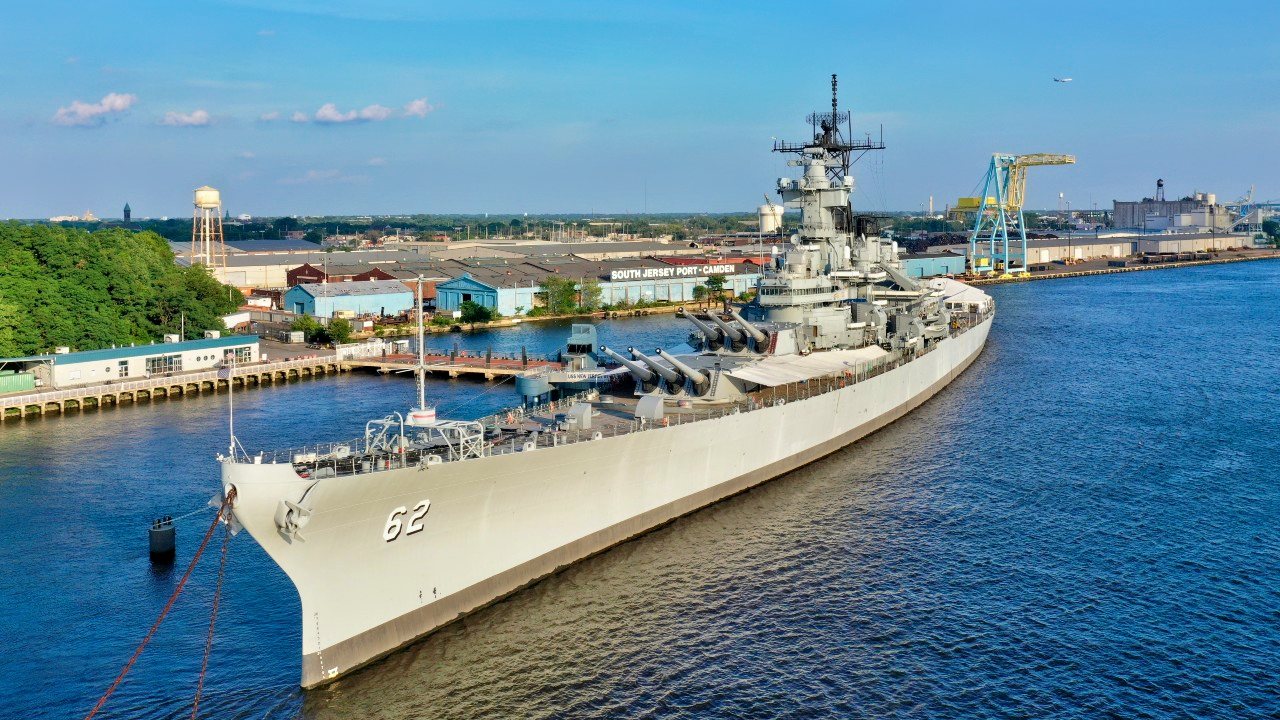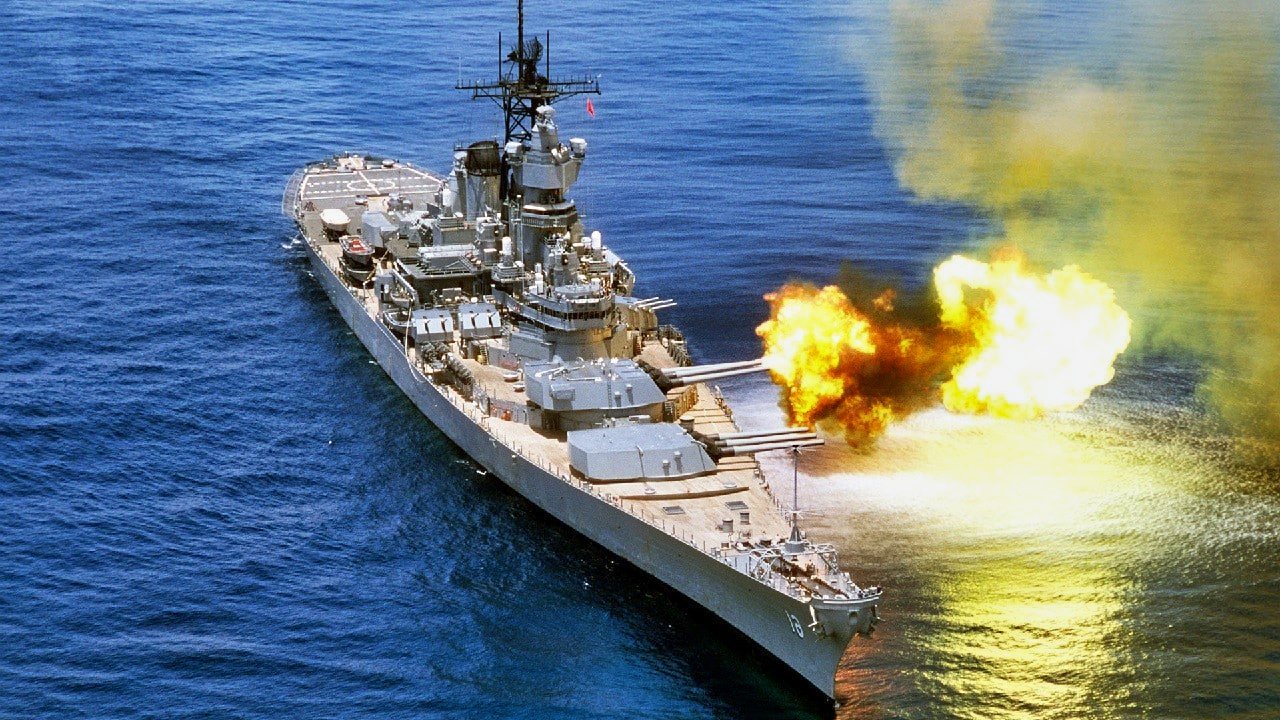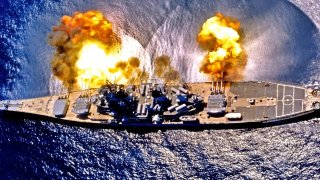Would the Navy Send Iowa-Class Battleships to Fight China?
The Iowa-class battleships were designed for major naval engagements during World War II but were primarily used for shore bombardment in conflicts like the Korean and Vietnam Wars. Modernized in the 1980s with missiles and advanced defense systems, they were decommissioned after the Gulf War and now serve as museum ships.
What You Need to Know: The Iowa-class battleships were designed for major naval engagements during World War II but were primarily used for shore bombardment in conflicts like the Korean and Vietnam Wars. Modernized in the 1980s with missiles and advanced defense systems, they were decommissioned after the Gulf War and now serve as museum ships.

-Some advocate for their return to counter modern threats like China's anti-access/area-denial (A2/AD) capabilities, arguing that their heavy armor and firepower could be effective. However, warfare has evolved with long-range weapons, drones, and advanced defenses, making battleships vulnerable.
Bottomline: The Navy should focus on modern platforms like submarines that can operate beyond A2/AD systems.
The Iowa-class battleship was the cream of the United States Navy’s crop when they were commissioned. Designed to fight—and win—a war in the Pacific against the Japanese Empire, by the time the Second World War had been concluded, the battleships in the US Navy’s fleet had been relegated to serving as mostly giant artillery platforms.
Before the war began, it was assumed that these behemoths would square off in an epic surface battle that would determine whose navy was superior in one, massive engagement. As is so often the case, though, what the eggheads who design these weapons envision and what they can actually be used for are very different things.
The Iowa-class came from an era where firepower was everything. Possessing massive 16-inch guns and heavy armor, these battleships were more useful for the United States—notably during later wars, such as the Korean and Vietnam Wars, as well as the First Gulf War—for sea-to-land bombardment missions.
At one point, during the Vietnam War, the military became so concerned about the rate they were losing aircraft carrier pilots during bombing runs over North Vietnam that they deployed the U.S.S. New Jersey to bombard targets that aircraft carrier pilots scouted for the battleship.
When former President Ronald Reagan promised to build a 600-ship navy, the Iowa-class battleships (there were a total of four in the fleet at that time) were modernized with Harpoon antiship missiles and given what was at that time an advanced close-in weapons system (CIWS) for point defense. That meant that these old battlewagons could give, as well as take, quite a wallop.

After Desert Storm, the Iowa-class was again decommissioned. These historic war machines with such honorable service to the country are now museum ships in Hawaii, California, and New Jersey.
Iowa-Class: Bring Back the Battlewagons?
Today, there are calls to bring these war beasts back into the service. This is especially so because of the rise of sophisticated anti-access/area-denial (A2/AD) capabilities designed to stunt the most potent weapon in the US Navy’s fleet today: its aircraft carrier. And because the heavily armored and armed battleship can still pack quite a punch, some believe it’d be a better weapon to retaliate against Chinese forces if—and when—Beijing launched an invasion of neighboring Taiwan, an American ally.
Certainly, if a third world war with China erupts over Taiwan, the Americans will have to get creative. The problem is that the Iowa-class battleship is almost a century old. Sure, they can be modernized. Yet, no real study has been conducted into how the battlewagons could be upgraded for modern warfare. What’s more, these warships require over 2,000 sailors to operate them, making them a very expensive and unwieldy alternative to US aircraft carriers (though, the crew requirements for the battleship are still less than what the flat tops require).
Plus, those who are calling for the restoration of the battleship are missing the bigger picture here: warfare has changed even more than when the battleships were unceremoniously replaced by the aircraft carrier.
Warfare at a Distance
The reason that the battleships lost their primacy in the US fleet was because carrier-based airpower allowed for longer-range combat. During the Battles of the Coral Sea and, a month later, of Midway, the carriers from the US side and the Japanese side never once sighted each other. The naval war was fought in the air, at distances far removed from the ships themselves.
It was the aircraft that spotted and conducted attacks on the opposing side’s fleet.
Thanks to the advent of sophisticated A2/AD defenses, the rise of automated (or semi-automated) drone swarms, and even space power, warfare has become even more long-distance than it became in 1941.
For the battleship to operate effectively, it’d be as exposed to China’s (or Russia’s) A2/AD systems. Maybe the Navy could make the battleships’ defensive systems better able to hold back the A2/AD fusillades that China will deploy against these ships.
Ultimately, however, the kind of swarming tactics that China plans to use against US surface warships—whether they be destroyers, aircraft carriers, or even battleships—would likely swamp whatever self-defense systems are on these warships.
That’s the point of the Chinese A2/AD strategy.
Therefore, the US Navy should not waste its time, money, or people developing more aircraft carriers (unless they’re medium-sized carriers) or restoring the battleships of yore. Instead, the Navy should be focused on developing weapons platforms that can fight far beyond the reach of China’s A2/AD systems. American naval strategists should also expand their investment and reliance on submarines.
About the Author
Brandon J. Weichert is a former Congressional staffer and geopolitical analyst who is a contributor at The Washington Times, as well as at American Greatness and the Asia Times. He is the author of Winning Space: How America Remains a Superpower (Republic Book Publishers), Biohacked: China’s Race to Control Life, and The Shadow War: Iran’s Quest for Supremacy. Weichert can be followed via Twitter @WeTheBrandon.
All images are Creative Commons and/or Shutterstock.


